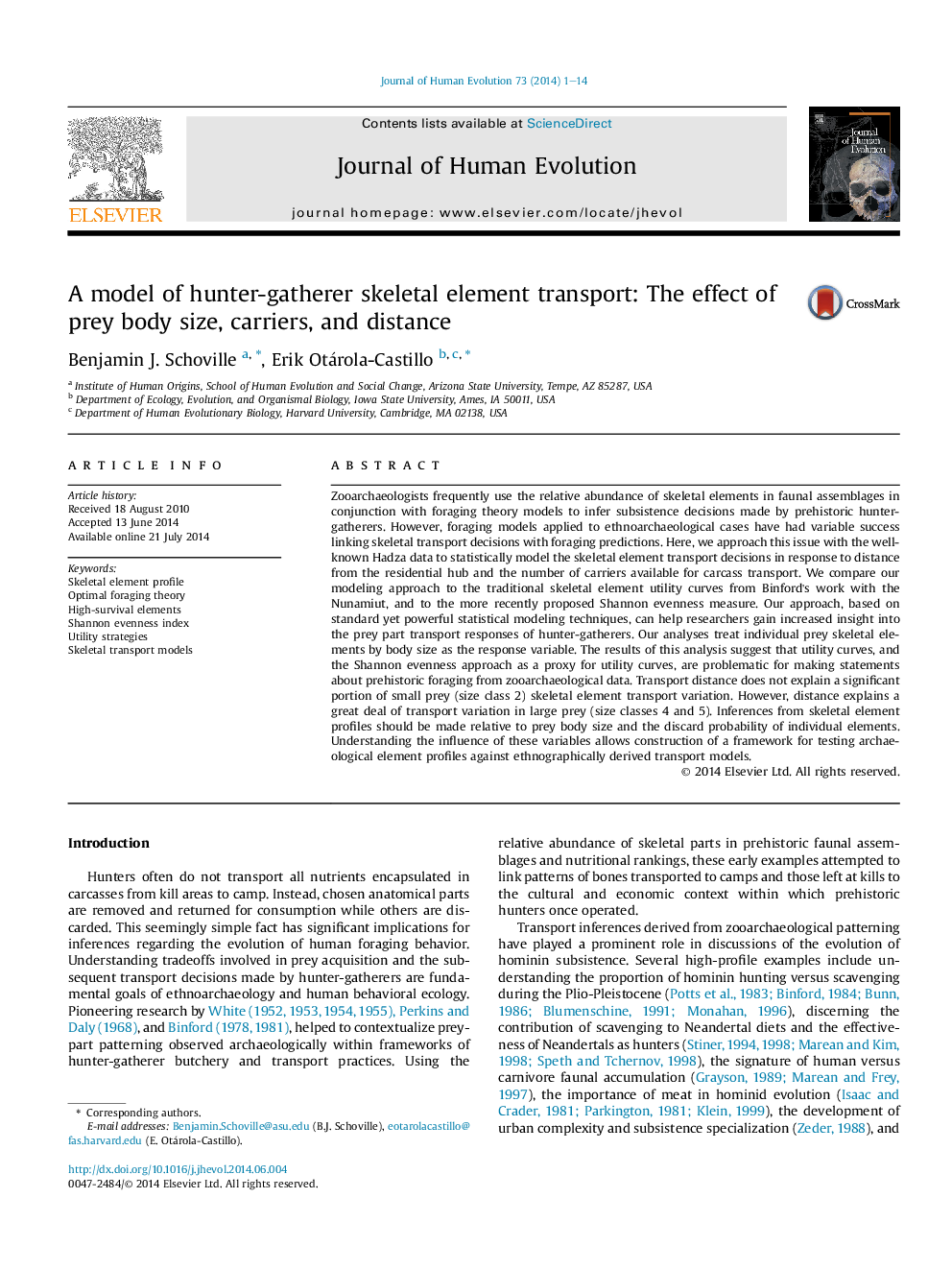| کد مقاله | کد نشریه | سال انتشار | مقاله انگلیسی | نسخه تمام متن |
|---|---|---|---|---|
| 4556086 | 1628176 | 2014 | 14 صفحه PDF | دانلود رایگان |
Zooarchaeologists frequently use the relative abundance of skeletal elements in faunal assemblages in conjunction with foraging theory models to infer subsistence decisions made by prehistoric hunter-gatherers. However, foraging models applied to ethnoarchaeological cases have had variable success linking skeletal transport decisions with foraging predictions. Here, we approach this issue with the well-known Hadza data to statistically model the skeletal element transport decisions in response to distance from the residential hub and the number of carriers available for carcass transport. We compare our modeling approach to the traditional skeletal element utility curves from Binford's work with the Nunamiut, and to the more recently proposed Shannon evenness measure. Our approach, based on standard yet powerful statistical modeling techniques, can help researchers gain increased insight into the prey part transport responses of hunter-gatherers. Our analyses treat individual prey skeletal elements by body size as the response variable. The results of this analysis suggest that utility curves, and the Shannon evenness approach as a proxy for utility curves, are problematic for making statements about prehistoric foraging from zooarchaeological data. Transport distance does not explain a significant portion of small prey (size class 2) skeletal element transport variation. However, distance explains a great deal of transport variation in large prey (size classes 4 and 5). Inferences from skeletal element profiles should be made relative to prey body size and the discard probability of individual elements. Understanding the influence of these variables allows construction of a framework for testing archaeological element profiles against ethnographically derived transport models.
Journal: Journal of Human Evolution - Volume 73, August 2014, Pages 1–14
